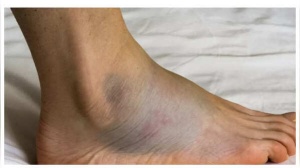On a warm afternoon in a remote village, with the sound of drums filling the surrounding, suddenly meeting people happily carrying knife-cut scars all over their bodies is not a rare sight to witness. Scars-clearly visible cuts all over the body, but there is no sign of pain on their faces. When it is an unfamiliar thing to witness for many, scarification is one of the most common practices among different African tribes. It is a deep cultural language that writes stories of identity and transition onto the human body.
Body cuts as honors?
Relating it to modern day’s tattoos would be partially wrong as in this context , it is not always done for aesthetics or choice.For many young women, the scarification ceremony during engagement is a must. It marks a transition from girlhood to womanhood, announcing that the woman is prepared for marriage with visible symbols etched into her skin. This communal acknowledgment is attached with pride, bravery, and a sense of responsibility. The ritual’s intensity is profound. The cuts, often made with sharp objects like knives or thorns,are carefully designed and deeply personal. Each pattern carries symbolic meaning-sometimes related to fertility, protection from harm, or spiritual beliefs invoked during the ceremony.
In many communities,these scars affirm their identity within the tribe and visually communicate her life stage to the wider community.
Can scars save one from death too? As weird as it may sound, there is a belief that some people in these tribes still believe these scars hold the power to restrict death. In an interview with the BBC, a scarred lady opened up, saying that when her twin sister died within weeks of her birth, she became ill. With obvious thoughts taking the upper hand, her surroundings made her believe that maybe she was next in line, and a traditional healer recommended marking her face as a protection shield.
Without proving the belief wrong, she did become better within days of the scarification.
But does she like it? The firsthand experience says, NO.
How a painful process takes place with the mode of celebration:
The person undergoing scarification, most of the time,the young individual entering a new life stage such as puberty, engagement, or adulthood, is prepared both physically and mentally. The process is celebrated in the presence of family and community members, highlighting its social importance.
Traditional tools such as sharpened knives, stones, glass shards, or metal blades are used to make these cuts in the skin. Some tribes also use burning methods.
A process that gives chills down anyone’s spine ,is indeed painful,given,the wounds heal over the course of weeks or months, during which the pattern is permanently etched in the skin. Some cultures use special care rituals to ensure proper healing and to prevent infection as well. The scars that form-sometimes raised keloids (thickened areas of scar tissue that can form after the scarification process) are considered marks of beauty, strength, or identity.

Credit:Instagram/gogeafrica
How did the young generation accept it?
Despite its rich heritage, scarification today has its own share of unacceptance. While many do it to keep the cultural significance intact, there are people who don’t even know why they are doing it. People share their accounts, saying they did it because they saw others doing it, or maybe just because of beautification, not actually being bothered about the traditional pride this holds. Urbanization, global beauty standards, and increased exposure to Western medicine have led some younger Africans to reconsider or reject the practice. According to studies, while older generations view scarification as a sacred tradition, many young people see it as a painful process without any present-day relevance, and the upcoming generation does not deserve to suffer from the pain.
Each scar pattern is unique, like a fingerprint-telling of personal and collective stories of lineage, status, achievements, family situation, and spiritual beliefs.But the most surprising part is the way the natives here are happily roaming around with these scars, rather flaunting it. In a world that often values fleeting beauty, for many scarification stands as nothing but a 'Painful bliss' here.

Credit:iStock


 5 Overlooked Warning Signs of Colon Cancer: Early Detection Saves Lives
5 Overlooked Warning Signs of Colon Cancer: Early Detection Saves Lives
 Shukla's ISS Arrival Heralds New Era for Indian Space Exploration; Gaganyaan Mission Looms
Shukla's ISS Arrival Heralds New Era for Indian Space Exploration; Gaganyaan Mission Looms
 Vijay Sethupathi Apologizes Amid Controversy Over Son Surya's Film 'Phoenix'; Thalapathy Vijay's Support Revealed
Vijay Sethupathi Apologizes Amid Controversy Over Son Surya's Film 'Phoenix'; Thalapathy Vijay's Support Revealed
 Android Security Alert: Government Warns of Critical Flaws Exposing User Data
Android Security Alert: Government Warns of Critical Flaws Exposing User Data
 Skin Deep: 7 Warning Signs on Your Skin That Could Signal Heart Trouble
Skin Deep: 7 Warning Signs on Your Skin That Could Signal Heart Trouble
 Ashada Gupt Navratri 2025: Dates, Significance, and How to Observe This Hidden Festival
Ashada Gupt Navratri 2025: Dates, Significance, and How to Observe This Hidden Festival
 Smith Eyes Grenada Test Return After Injury Layoff
Smith Eyes Grenada Test Return After Injury Layoff
 Staying Hydrated May Significantly Lower Risk of Heart Failure, New Study Suggests
Staying Hydrated May Significantly Lower Risk of Heart Failure, New Study Suggests
 Moto G54 Price Slashed in India: Check Out the New, Lowered Costs
Moto G54 Price Slashed in India: Check Out the New, Lowered Costs
 Gambhir Sidelines Pant's Twin Tons After India's Test Loss, Emphasizes Team Performance
Gambhir Sidelines Pant's Twin Tons After India's Test Loss, Emphasizes Team Performance